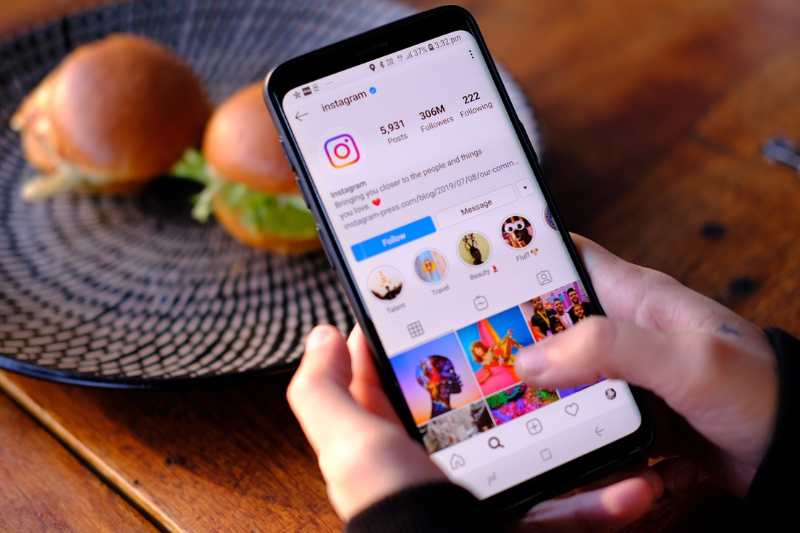In the dynamic landscape of Instagram marketing in 2023, the age-old question persists: “Are Instagram hashtags dead?” While the debate continues, one thing is clear – Instagram hashtags are far from obsolete. However, the game has evolved, and in the current era, keywords reign supreme, reshaping how we approach content on this ever-popular social media platform.
The Evolution of Instagram Strategies
Keywords Take Center Stage
In 2023, the Instagram landscape has shifted towards a more nuanced approach. While hashtags continue to play a vital role, keywords have emerged as the kings of content optimization. The entire caption box and even the bio, including the ‘name’ field, are now SEO battlegrounds where the strategic use of keywords can significantly impact visibility.
Rethinking the 3-5 Hashtag Myth
The once-prescribed “3-5 hashtags” rule has become a point of contention. In 2023, it’s clear that a one-size-fits-all approach doesn’t necessarily apply. Influencers and marketers are experimenting, some finding success with a more restricted number of hashtags, while others swear by the full 30. The key lies in understanding your audience, monitoring performance metrics, and adapting your strategy accordingly.

The Power of Keywords in Captions and Bios
As Instagram becomes increasingly SEO-centric, optimizing captions and bios with relevant keywords becomes non-negotiable. Crafting compelling and keyword-rich captions enhances discoverability, making your content more accessible to a wider audience. The ‘name’ field, once a mere identifier, is now a valuable space for strategic keyword placement.
Example in Action:
Before: “Enjoying coffee on a Sunday. #CoffeeLover #SundayVibes”
After: “Savoring a relaxing Sunday with my favorite brew. ☕ #WeekendCoffee #SundayChill”
The Renaissance of Niche-Specific Instagram Hashtags
In the quest for optimal engagement, niche-specific hashtags are experiencing a renaissance in 2023. Instagram’s refined algorithms favor content specificity, making targeted hashtags essential. Collaborating with micro-influencers within a niche and utilizing their branded hashtags has proven effective, fostering authenticity and deeper connections with the audience.
Example in Action:
Before: “Fitness journey! #Workout #FitnessGoals”
After: “Elevating my fitness game with targeted routines. 🏋️♂️ #HIITChallenge #FitLifeJourney”

Micro-Influencers and Their Instagram Hashtag Magic
Micro-influencers, once overshadowed by their larger counterparts, are now wielding significant influence in the hashtag game. Collaborations with micro-influencers within specific niches contribute not only to increased engagement but also to the creation of a genuine community around a brand.
Example in Action:
Before: “New skincare routine! #Skincare #GlowingSkin”
After: “Trying out @MicroInfluencer’s recommended products for radiant skin. ✨ #MicroInfluencerTips #SkincareRoutine”
Brand-Generated Hashtags: The Community Catalyst
Brand-generated hashtags are more than trends; they are community catalysts. In 2023, brands are leveraging custom hashtags to encourage user-generated content, turning customers into brand ambassadors. This approach not only strengthens brand loyalty but also adds a human touch to the brand-consumer relationship.
Example in Action:
Before: “Our customers are the best! #CustomerAppreciation”
After: “Join the community! Share your moments with #BrandCommunityLove. 🤝❤️”
Striking the Right Balance
Keywords, Hashtags, and Balance
The sweet spot in 2023 lies in finding the perfect balance between keywords and hashtags. Rather than viewing them as mutually exclusive, successful Instagram marketers intertwine both elements seamlessly. A carefully curated combination of relevant keywords in captions and bios, along with a strategic selection of hashtags, can elevate your content above the digital noise.
Example in Action:
Before: “Exploring nature’s beauty. #Nature #Adventure”
After: “Immersing myself in the tranquility of nature. 🌿 #NatureEscape #OutdoorAdventures”

In the ever-evolving world of Instagram marketing, the question isn’t whether hashtags are dead, but how they coexist with the new ruler of the realm – keywords. The advice of limiting hashtags to 3-5 may not be a universal truth in 2023. Instead, influencers and marketers must embrace experimentation, monitor results, and strike a delicate balance between the power of keywords and the enduring relevance of hashtags. As Instagram’s SEO landscape continues to mature, those who adapt and master this delicate dance will undoubtedly rise above the competition, carving a distinct space in the hearts and feeds of their followers.
Ready to elevate your Instagram game and boost your brand’s presence? Cloud9 Marketing is your trusted partner in navigating the ever-changing world of social media. Our team of experts are here to craft a personalised strategy for your business. Book a consultation today!










